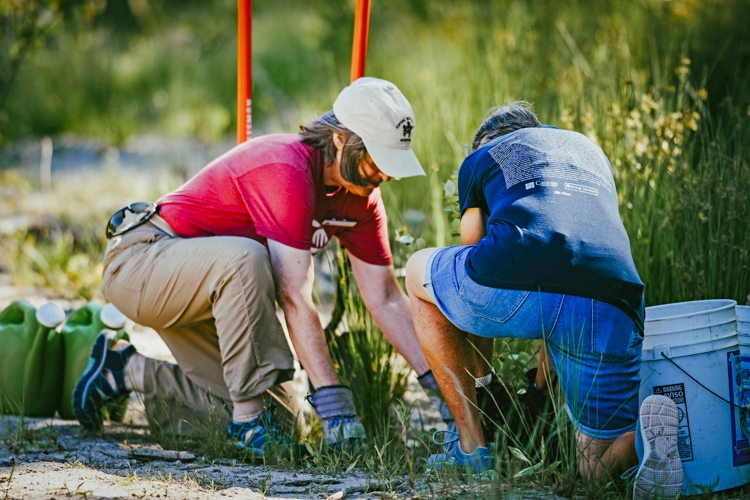
“Hi, my name is Lisa and I’d like to volunteer here.” When I first introduced myself to the newly hired sanctuary director at Tidmarsh Wildlife Sanctuary in Plymouth, the site wasn’t even open to the public yet. I met Lauren Kras at a “sneak peek” event where she was leading the public on tours of the former cranberry farm-turned-sanctuary and demonstrating just how extensive the largest freshwater ecological restoration project in the Northeast really was. Several months later, I was volunteering for the first time, at an open house event.
My second volunteer experience was a little rougher— it even had me briefly questioning my decision to be a volunteer. The task was invasive plant removal— specifically, the purple loosestrife that was encroaching on part of the wetlands. I should have been a bit suspicious when I showed up and was the only volunteer there to help the staff. It seemed simple enough though: dig up the plants, place in a bag, and repeat. The complicating factor was the weather—it was a hot, humid, August day and there were only a few small trees to provide shade. After several long, sweaty hours and many full bags, we were finally done. I thought, “Anything else I can do to volunteer at the sanctuary has to be easier than that!”

It’s three years later and I’m still volunteering. What I like is the variety of things I’ve been able to do: education programs, trail building, general clean-up, counting herring, planting pollinator gardens, installing benches, serving as trail steward, and planting trees and shrubs in a newly restored area.
Recently, another longtime volunteer, Jan Spence, and I had the honor of planting the final shrub at the ceremony celebrating the completion of the restoration project. It was a special moment, but honestly, the best part of being a volunteer is working with the staff. In the beginning, there was just Lauren. Each new person has been an excellent addition to the team. And we truly are a team, volunteers and staff, with a common goal of making Tidmarsh the best sanctuary it can be.
Which is why, when walking the trails, I proudly wear my name tag that identifies me as a Tidmarsh volunteer.
Jan’s Story
Lisa’s volunteer partner, Jan Spence, has her own story to tell about why she volunteers at Tidmarsh—read about it here.
In Your Words is a regular feature of Mass Audubon’s Explore member newsletter. Each issue, a Mass Audubon member, volunteer, staff member, or supporter shares their story—why Mass Audubon and protecting the nature of Massachusetts matters to them. If you have a story to share about your connection to Mass Audubon, email [email protected] to be considered for In Your Words in a future issue!





